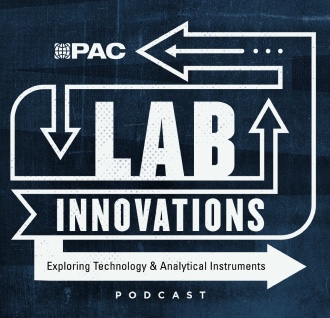Nov-2022
Near and long-term options for decarbonising steel production
Longer-term solutions to decarbonise the steel industry are not sustainable today, but steelmakers can take affordable short-term steps towards decarbonisation.
Joachim von Scheele
Linde
Viewed : 5495
Article Summary
The steel industry ranks amongst the top three CO2 emitters from the industrial segment. Consequently, the pressure to decarbonise steelmaking has led many producers to set carbon-neutral goals over the 2030-2050 timeframe. But how are those goals to be achieved? Based on the individual preconditions, it is important to develop and deploy roadmaps that include both near-term actions and, in parallel, longer-term activities broken down as measurable milestones. The transition of the industry, which is the aggregated result of the actions of each individual plant, is a journey that will span decades.
In 2021, world steel production reached 1,950 million tonnes (Mt), with a supply of iron for that steelmaking being 1,354 Mt of iron from blast furnaces and 119 Mt of direct reduced iron (DRI), most of the latter produced using natural gas as reductant. Additionally, some 750 Mt of scrap were charged.
Steel is the most recycled material in the world, and the first step to achieving sustainability and decarbonisation is to maximise the degree of recycling. Between the years 2000 and 2010, world steel production grew by more than 700 Mt/a, predominantly in China, where today more than half of the world’s steel production takes place. This is resulting in a massive increase in availability of scrap for years to come. Clearly, this will have a very positive impact on the carbon footprint of the steel industry, as the increase in scrap supply will be larger than the growth of steel production. However, for the next decades, most of the raw material for steel production will remain pig iron.
While electrification is the direct route to decarbonise many processes, several processes in steel production are extremely difficult to electrify — these include processes for iron ore reduction, as well as heating processes which use large-scale high-temperature combustion in a steel mill. For such processes, the main options include use of oxyfuel combustion to achieve increased energy efficiency, introduction of low-carbon fuels, and carbon capture.
Ultimately, the use of clean hydrogen as a reductant as well as a fuel source is the endgame that steelmakers will adopt when a viable supply of hydrogen becomes available. Accordingly, there is a general pathway to decarbonisation:
Å’ Increase energy efficiency, e.g., by using oxyfuel combustion
 Use of low-carbon fuels
Ž Carbon capture
 Use of clean hydrogen as reductant and fuel
Over the next decades, a large transition will take place, but it will take time and involve multiple solutions — some more incremental in their nature, some more disruptive — and the pace will be different in different parts of the world. The drive from the market to produce steel with a low carbon footprint and availability of a viable supply of clean energy are two important factors. Figure 1 is an attempt to summarise the expected general development over the coming decades.
A greener blast furnace
Integrated steel mills, which produce steel from iron ore, account for 70% of global steel production but emit almost 90% of CO2 emissions due to their high CO2 intensity of 2.3 t CO2 per tonne of steel produced (Scope 1-3). In contrast, so-called mini-mills using the electric arc furnace (EAF) process, with recycled steel scrap as the primary feedstock, account for the balance at 30% of global steel production but produce only 10% of emissions, since they emit 0.6 t CO2 per tonne of steel produced.
While mini-mills have the potential to eliminate almost all their CO2 emissions by using renewable electric power and green hydrogen in their existing production plants, integrated mills cannot — the blast furnace in an integrated mill requires a certain minimum level of coke (practically around 300 kg/t) to operate, with attendant CO2 emissions from its use. Therefore, integrated mills either need ways to capture and sequester all their CO2 emissions, or they require a fundamental change to the processing route away from the blast furnace, with concomitant Capex and Opex implications.
Blast furnaces use oxygen enrichment of the cold blast to improve productivity and to enable the use of injectants through the tuyeres that reduce CO2 emissions. Many blast furnaces operate with up to 30% oxygen in the blast today. In addition to the cold blast, oxygen can also be used in blast furnace stoves, which is a short-term way to increase energy efficiency. Stove oxygen enrichment (SOE) is a method to add high-purity oxygen to the stove combustion air to eliminate the use of sweetening high-value fuels like natural gas or coke oven gas, raise blast temperature, and debottleneck plugged stoves. Evaluations show that a 100ºC increase in blast temperature translates into coke savings of 8-12 kg/t of pig iron, with an attendant reduction in CO2 emissions. Linde has successfully implemented SOE in 14 blast furnaces in the Americas, Asia, and Europe.
In the short term, charging of DRI, and potentially also scrap, into the blast furnace could also decrease its CO2 emissions. While DRI is mostly charged into EAFs, it can also be briquetted into hot briquetted iron (HBI) and charged into blast furnaces or steelmaking converters to achieve decarbonisation in an integrated steel mill. As a rule of thumb, each 10% increase in burden metallisation in a blast furnace by the addition of HBI increases the production rate by 8% and decreases the coke rate by 7%, with attendant CO2 savings. Moreover, top gas recycling of the blast furnace gas combined with carbon capture use and sequestration (CCUS) is one potential approach to reduce emissions from integrated steel mills. It is being considered at sites where CCUS is a viable option.
Low-carbon fuels
While hydrogen is generally considered the ultimate low- or zero-carbon fuel of the future, there are other approaches to low-carbon fuels in the near term with feedstocks derived from biomass, waste plastics, municipal solid waste (MSW), and so on.
The coke rate in blast furnaces can be lowered using injectants through the tuyeres with a lower carbon footprint, such as pulverised coal, natural gas, coke oven gas, and potentially hydrogen in the future. For example, every ton of injected coal avoids 0.85-0.95 tonne of coke production, with accompanying energy savings of around 3.75 GJ/t injected coal. However, tuyere injection has its limits due to a negative impact on the Raceway Adiabatic Flame Temperature and the ability to combust certain injectants within the confines of a tuyere. These limits can be raised if the injectants are first gasified into a syngas (CO+Hâ‚‚) externally, prior to injection into the tuyeres. This external gasification can be performed by, for example, Linde’s Hot Oxygen Technology (HOT) — a fuel-flexible tool to gasify solid, liquid, or gaseous feedstocks, including natural gas, coke oven gas, wide varieties of biomass, waste plastics, and MSW (see Figure 2). A typical HOT system is an efficient, small-scale gasifier to generate reducing gas or syngas up to 35,000 Nm3/h per unit. Multiple units can be employed to meet the requirements of a blast furnace. This approach helps to minimise the CO2 footprint of an existing blast furnace without significant modifications to the production process.
Typically, DRI is produced with natural gas as the reducing gas in a shaft furnace. A HOT system can also be used to deliver reducing gas or syngas to a DRI plant, derived from a variety of sources, including coke oven gas, and replacing the need for natural gas. Linde has worked with MIDREX to develop the thermal reactor system (TRS) that will produce clean syngas from coke oven gas and other hydrocarbon sources for DRI production. TRS utilises Linde’s partial oxidation technology, using HOT, which offers the potential to do partial oxidation of hydrocarbons without steam injection. When this technology is combined with an extended reaction chamber into which a preheated stream of coke oven gas is added, the product gas leaving the chamber is suitable for direct use as a reducing gas to produce DRI.
Categories:
Add your rating:
Current Rating: 4

















